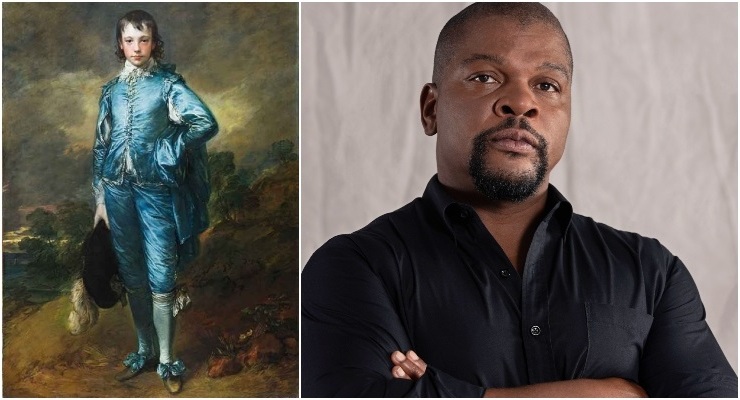
The Huntington Library, Art Museum, and Botanical Gardens in San Marino is leading a virtual symposium on Saturday titled “Looking Like a Person: Portraits after Coloniality,” to interrogate the issues raised by a new painting by contemporary artist Kehinde Wiley that responds to a “Grand Manner” masterpiece by Thomas Gainsborough: “The Blue Boy,” circa 1770.
Grand Manner, according to a widely accepted definition, is an idealized aesthetic style derived from classicism and the art of the High Renaissance, a period in Italy between the late 1400s and the mid to late 1520s that saw the rise of some of the world’s greatest artists, among them Leonardo da Vinci, Michelangelo and Raphael, and Bramante.
In the eighteenth century, British artists and connoisseurs used the term to describe paintings that incorporated visual cultural metaphors in order to suggest noble qualities in their subjects.
Earlier in September, The Huntington announced it had commissioned Wiley to create a new work inspired by “The Blue Boy.” Wiley’s “A Portrait of a Young Gentleman,” which was also the original title of the Gainsborough painting, will be a large-scale portrait in the Grand Manner style that will be added to The Huntington’s permanent collection.
The new painting will be on view from Saturday through Jan. 3 in The Huntington’s Thornton Portrait Gallery, opposite the institution’s iconic and recently restored “The Blue Boy.”
A statement by The Huntington said the acquisition of the Wiley portrait celebrates the 100th anniversary of the purchase of the Gainsborough painting by Henry and Arabella Huntington, the founders of the institution.
“Between these two paintings, separated by 250 years, lies a colonial history that has managed representation across a field of visuality, nominating certain figures for human status and others for something less or more,” The Huntington statement said. “What does it take, in a Euro-American art tradition, to look like a person? And what might come after coloniality in art?”
An opening panel of interdisciplinary scholars will address the philosophical issues. considering what is at stake in depicting humans in the genres of modernity. Two art historical panels, one focused on the 18th century and one focused on contemporary art, will explore specific examples of the ways in which artists have reflected, reinforced, or resisted the power of representation.
The event is free to attend and will be held online via Zoom, from 9:15 a.m. to 1:30 p.m. The Zoom link will be sent to attendees in their registration confirmation email.
To reserve, visit www.huntington.org/portraits-
For more information, call (626) 405-2100.






